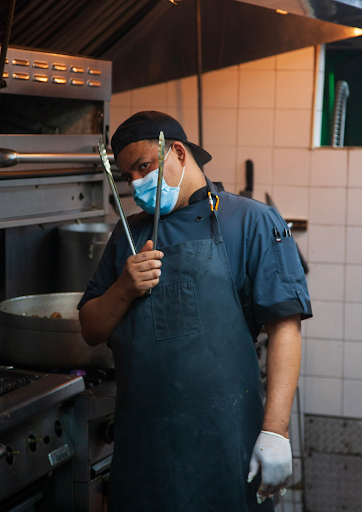Bolinho de chuva with Ana Rodrigues
Ana Rodrigues
Aula em português
Sao Paulo, Brasil
Universal Kitchen: Group 2
Register here:
Bolinho de arroz e Bolinho de chuva com doce de leite caseiro
História por trás da receita
1. Bolinho de arroz - pensei nessa receita para que possamos introduzir o reaproveitamento dos alimentos, podendo usar o arroz que sobrou de uma refeição.
2. Bolinho de chuva com doce de leite caseiro - memória afetiva e ingredientes acessíveis.
O que você irá precisar:
Para o bolinho de arroz (+ou - 15 unidades)
2 xícaras (chá) de arroz cozido
2 ovos
¼ de xícara (chá) de farinha de rosca
¼ de xícara (chá) de queijo parmesão ralado
2 colheres (sopa) de salsinha picada grosseiramente
sal e pimenta-do-reino moída na hora a gosto
3 xícaras (chá) de óleo para fritar
Utensílios para essa receita:
Xícara medidora
Bowl médio
Ralador
Faca
Tábua de corte
Panela média funda
Escumadeira (não sei qual seria o nome desse utensílio em inglês, mas a escumadeira é uma colher grande com furinhos, parece uma raquete só que redonda)
2. Bolinho de chuva (+ ou - 20 bolinhos)
1 ovo
⅓ de xícara (chá) de açúcar
1 colher (sopa) de manteiga temperatura ambiente
1 pitada de sal
½ xícara (chá) de leite
1 xícara (chá) de farinha de trigo
½ colher (sopa) de fermento em pó
óleo para fritar
açúcar e canela em pó a gosto para polvilhar
Para o doce de leite caseiro
4 xícaras (chá) de leite integral
1 xícara (chá) de açúcar
Utensílios para essa receita:
Fuet (batedor de arame)
Xícara medidora
Bowl médio
Colher
2 panelas fundas
Prato raso
Sobre Ana Rodrigues
Graduada em Gastronomia em 2000, desde sua formação atuou, como gerente executiva, em restaurantes da cena gastronômica de São Paulo.
A partir de 2017 começa a atuar fortemente em projetos sociais, cooperando com várias iniciativas, sobretudo na área de gestão de restaurantes com foco em empreendimentos sociais.
Esteve envolvida em projetos, como ,mentora dos participantes do "Mi Arepa" e "Raízes na Cozinha", com a Ong Migraflix, "Diversidade a mesa" voltado a pessoas egressas do sistema prisional LGBTQIA+, iniciativa da SAP Gov do estado de SP, “Cozinha São Paulo”,parceria da ONG “Mobilidade Verde” e a Prefeitura de São Paulo,
Atuou intensivamente na cozinha, em conjunto com mulheres empreendedoras e chefs na campanha “Gente é pra brilhar e não para morrer de fome” organizada pela sociedade civil na ajuda contra a fome durante o período crítico da pandemia.
Acredita firmemente na transformação de vidas e histórias com processo social e educativo em gastronomia modificando a si próprio por meio do rico aprendizado sobre novas culturas e modos de se alimentar.


















